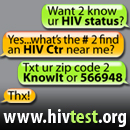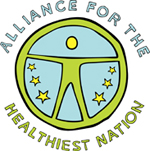Partner Services FAQs
For the Public and Consumers of Partner Services Activities
Q. What are partner services (PS)?
A. The term partner services includes a variety of related services which are offered to people infected with a HIV/STD and their sex or needle-sharing partners. The primary “steps” (and their corresponding services) in the partner services process are as follows:
- Identify individuals who have recently been diagnosed with syphilis, HIV, gonorrhea, or chlamydial infection. Such individuals can be identified by partner services programs through a variety of methods, such as disease reporting systems, referrals from STD clinics or counseling and testing sites, and referrals from private sector health-care providers.
- Contact the newly diagnosed individual to determine whether he/she has received the test results and understood them, whether he/she has received referrals to medical care and other needed social services, and whether he/she has accessed medical services, including treatment.
- Discuss the need for this individual to notify his/her sexual or needle-sharing partners about their possible exposure to HIV or another STD and offer partner services as a means of assisting the individual with such notifications.
- If the infected individual agrees to participate in partner services, interview him/her about partners he/she had within a defined period of time (the length of time differs for different STDs). The purpose of the interview is to assemble enough information about each partner to ensure that he/she can be located and notified of his/her exposure to a STD.
- Attempt to locate partners named in the interview and notify them of their exposure to an STD. Notification can be done by health department staff, non-health department professionals (for example, private clinicians), or the infected person.
- Counsel located partners about their exposure to infection and provide or refer them to testing, medical care, and other prevention or social services.
Q. When and where do partner services take place?
A. Partner services should be offered to patients as soon after their diagnosis as possible. Likewise, partners should be notified of their possible exposure and provided treatment (for curable STDs) or testing and linkage to medical care (for HIV) as soon as possible. Partner notification typically occurs within 2-3 working days of identification, unless there is an indication of potential partner violence.
In the case of HIV, experience has shown that reactions to learning one is infected with HIV vary. Therefore, partner services providers should recognize and, within reason, accommodate those patients who need other issues resolved before being ready to fully participate in partner services.
Some patients may not be ready to participate in an initial partner services interview at the time of first contact. In these cases, health department staff will usually try to schedule a follow-up appointment or re-contact the patient when he or she is better prepared to address the issue of notifying partners.
Partner services can take place in a variety of locations. Where partner services take place depends on the specific situation of the patient and his or her partners, as well as the type of professional involved (e.g., a private doctor or health department staff) and the nature of their involvement. Patients might be interviewed at a doctor’s office, STD clinic, HIV counseling and testing site, or their homes. Partners may be notified at their homes, the home of the infected individual, a doctor’s office, or a community-based organization. While the exact location can vary, the key features of that location should ensure that patients be interviewed and their partners be notified in places that are comfortable for them and private.
Q. What are the benefits of partner services?
A. Partner services offer substantial benefits to three main groups: persons infected with a HIV/STD, their partners and the community. For persons infected with a HIV/STD, the benefits include assistance with notifying partners of their possible exposure to infection and with accessing medical care and/or treatment, prevention services, and other services (e.g. drug treatment). Benefits to partners include being made aware of their exposure to a HIV/STD and receiving referrals to testing, treatment, and other services if needed. Partner services may benefit the wider community by leading to the earlier identification and treatment/linkage to care of previously undiagnosed cases of HIV/STDs. Locating undiagnosed and untreated cases of HIV/STDs sooner may contribute to decreased transmission or burden of disease in the community.
Q. How will increasing the provision of partner services reduce HIV/STD transmission?
A. Research suggests that individuals who are infected with HIV or another STD and unaware of their infections contribute disproportionately to ongoing disease transmission in the community. In addition, studies have shown that finding and diagnosing these infected individuals may lead to decreased transmission, either by eliminating infection sources (i.e., treatment for those with curable STDs) or by decreasing risk behaviors (i.e., through counseling for those with incurable STDs). Thus, partner services may lead to decreases in STD and HIV transmission in the community because it is an effective means of finding individuals with undiagnosed infections and linking them to testing, medical care and treatment, and prevention services. The challenge for STD and HIV prevention programs is ensuring that partner services and other public health interventions are effectively delivered to enough people that they have an impact on jurisdiction-wide morbidity. Health departments should regularly review their performance on partner services to be sure that partner services are being implemented as planned and having the desired effect.
Q. Are HIV/STD-infected persons or their partners required to participate in partner services?
A. No. Individuals infected with HIV or another STD are not required to participate in partner services. Participation is voluntary on the part of the infected persons and their partners, but should be encouraged by health departments.
Q. Are partner services generally perceived as being acceptable by 1) HIV/STD patients, 2) partners, and 3) private providers?
A. Few data exist addressing acceptability of STD partner services, although existing training for DIS includes methods to maximize acceptability. A recent systematic review of the acceptability of HIV partner counseling and referral services (PCRS) found that 1) the majority of potential clients (i.e.,. HIV-infected or HIV-negative persons who have had no direct experience with HIV PCRS) surveyed indicated they would be willing to participate in client referral (i.e., self-notify a partner), 2) most potential clients would be willing to let health department personnel notify their partners, 3) the majority of HIV-infected PCRS clients used provider referral to notify one or more partners, 4) the majority of partners either wanted to be notified or were comfortable with notification by a health-care provider, and 5) the majority of providers are in favor of partner notification. HIV partner services are considered very acceptable by diverse groups when conducted appropriately.
Q. What strategies for notifying partners are included in the recommendations?
A. The new partner services recommendations describe five strategies for notifying partners that they have been exposed to HIV or another STD. These strategies are similar with respect to what the partner is told; the main difference between them is who is doing the telling. Notification can be done by any of the following:
- A public health professional who has been specifically trained to locate and notify partners of their possible exposure to an STD, including HIV.
- The infected person.
- The infected person and the health department specialist together.
- A non-health department specialist such as a private physician.
- A combination strategy: The public health professional completes the notification when the infected person fails to contact their partner within an agreed upon amount of time.
Q. Can children or teenagers access partner services without their parents’ knowledge or consent?
A. All 50 states and the District of Columbia allow minors to consent to STD services without parental consent or knowledge, although some states specify that the minor must be of a certain age (usually 12 or 14 years) to do so. In addition, 31 states explicitly mention that HIV testing and counseling services are among STD services to which a minor can consent. As partner services are an STD service, minors would be able to access them without parental consent or knowledge, although the specific age at which they may do so varies across states and in some cases, infections. Because laws related to parental consent may vary in detail from one area to another, partner services programs should collaborate with legal counsel to develop policies and protocols that are consistent with all applicable laws and regulations. Program managers and partner services staff should remain up-to-date on state and local laws and regulations related to parental consent, diagnosis and treatment of STDs, and HIV counseling and testing and should seek legal counsel if there is any doubt regarding a specific case.
Partner services programs may also be subject to state and local requirements related to reporting of suspected sexual activity involving an adult and a minor, child abuse, and sexual crimes. Partner services programs should collaborate with legal counsel to develop policies and protocols related to these issues. Persons providing services to youth should be alert to these issues and should notify the appropriate authorities (e.g., child protective services agency) in accordance with applicable laws and regulations.
Q. Can organizations and individuals outside the health department system, such as private medical providers and community-based organizations, be involved in the provision of partner services?
A. Private medical providers, community-based organizations, and other health and human services organizations (e.g., community health centers) can play an important role in maximizing partner services by identifying patients who have not received HIV/STD partner services or who need additional partner services and referring them to the local health department. In some areas, medical and service providers may be permitted to provide additional aspects of partner services, but they should work collaboratively with the local health department to ensure that their activities are consistent with local laws and regulations.
- Page last reviewed: October 30, 2008
- Page last updated: October 29, 2008
- Content source: Centers for Disease Control and Prevention
Contact Us:
- Centers for Disease Control and Prevention
1600 Clifton Rd
Atlanta, GA 30333 - 800-CDC-INFO
(800-232-4636)
TTY: (888) 232-6348
24 Hours/Every Day - cdcinfo@cdc.gov




